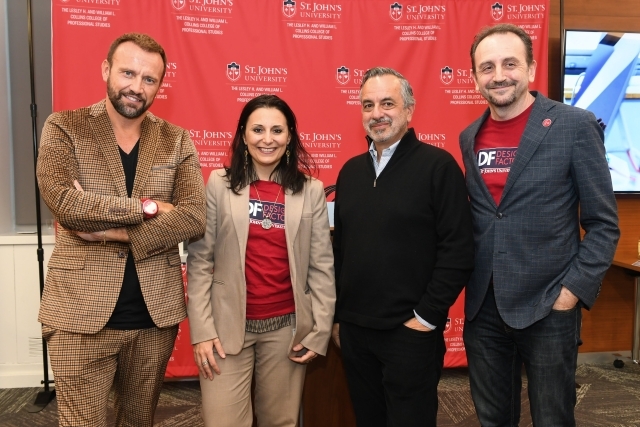
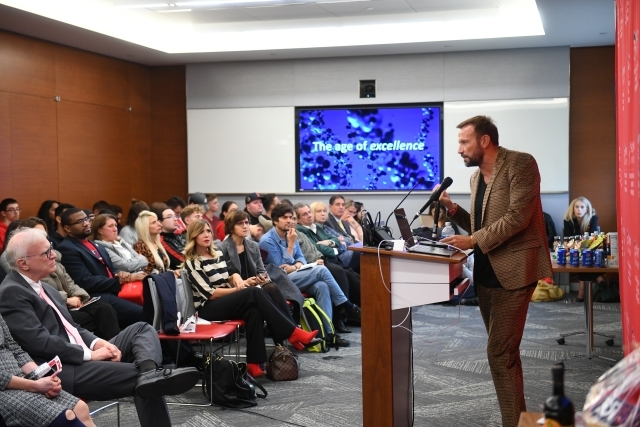
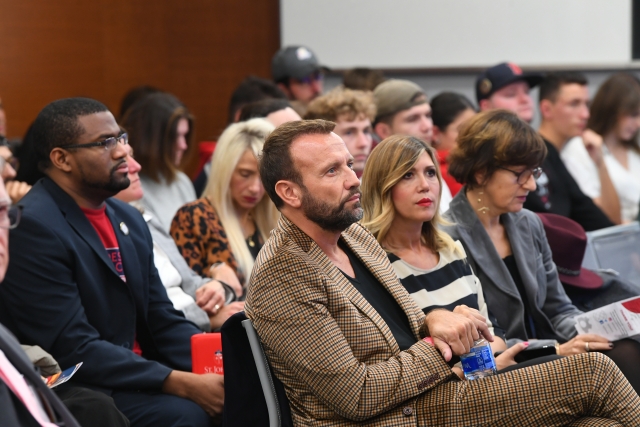
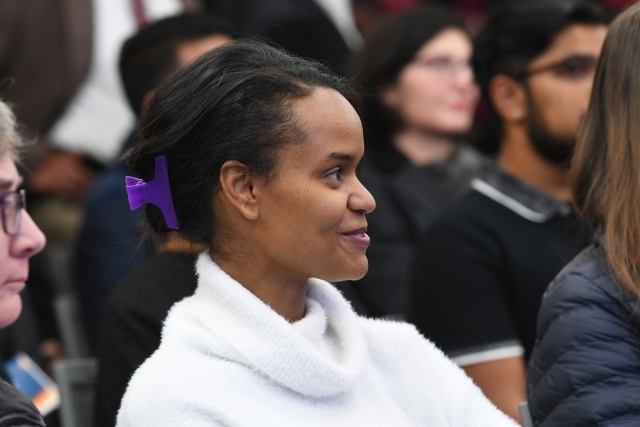
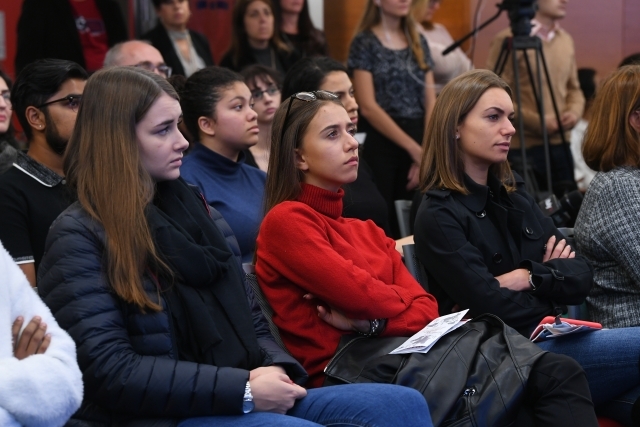
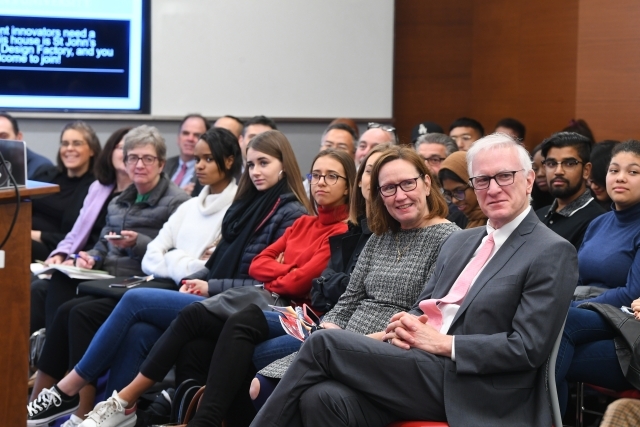
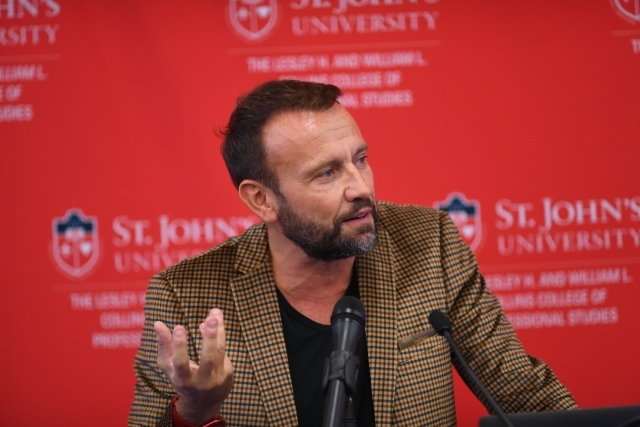
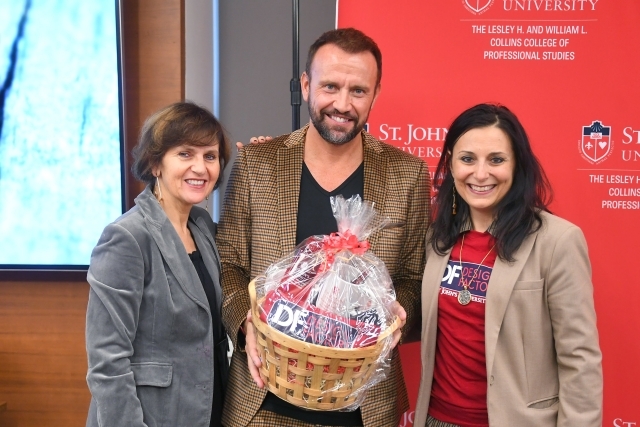
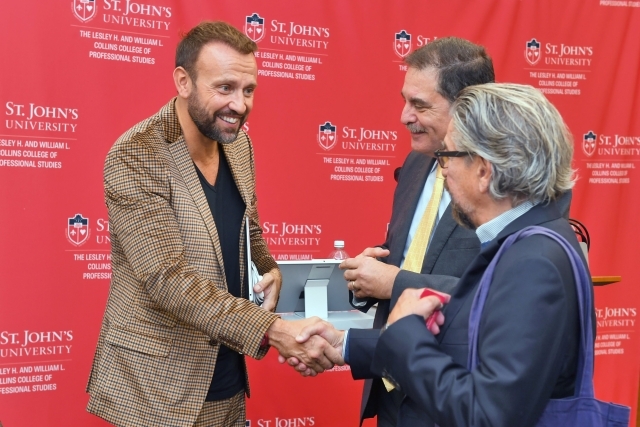
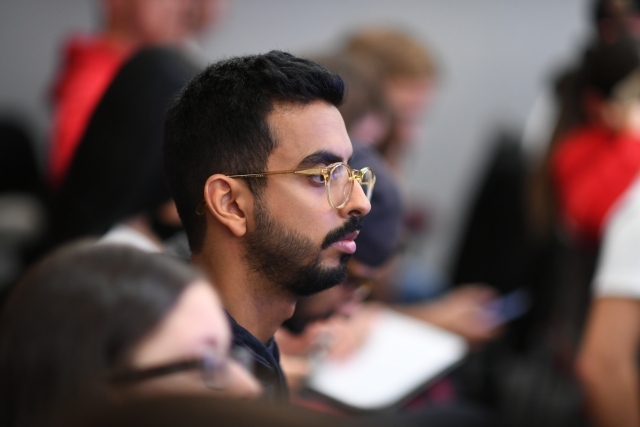
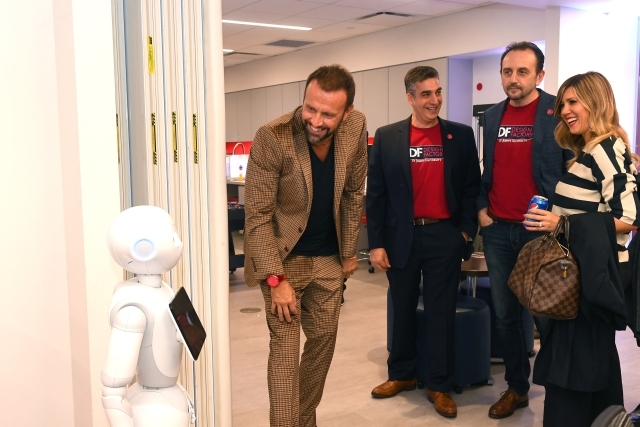
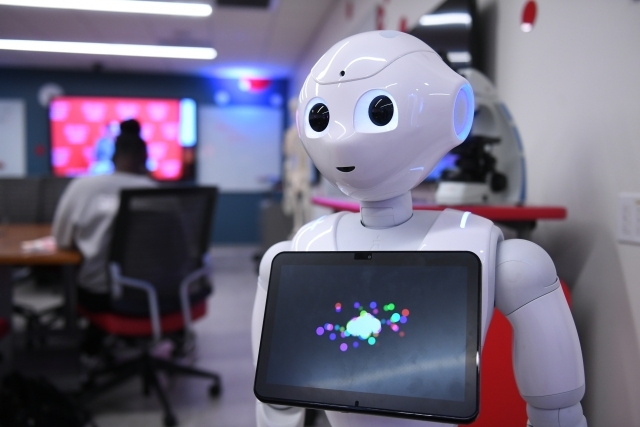












St. John’s University’s Design Factory in The Lesley H. and William L. Collins College of Professional Studies (CCPS) was officially launched recently during “A Night of Design” that was held in the facility’s new home inside the Farella Innovation Laboratory, which is housed in St. Augustine Hall on the Queens, NY, campus.
“Our student innovators need a house. This house is St. John’s Design Factory, and you are all welcome to join,” said Luca Iandoli, Ph.D., Associate Dean for Global Programs and Research, before a crowd of well-wishers that included students, faculty, administrators, staff, and invited guests who gathered on Monday, October 28, in the CCPS lobby just outside the Design Factory.
“We are here tonight to celebrate the notion of human-centered design and its integration into our curriculum,” said Katia Passerini, Ph.D., PMP, The Lesley H. and William L. Collins Distinguished Chair and CCPS Dean, during her welcoming remarks. “We are talking about the integration of visual arts and design and engineering principles—the merging of beauty and function, form and function, and good quality that does not forget good design.”
Following a year-long pilot project in several courses crossing various majors in CCPS, such as sport management, mass communication, computing, administration and economics, and advertising, the Design Factory was established as an interdisciplinary product development and learning center. It aims to connect aspiring student innovators with faculty, industry leaders, and other students from various disciplines, all while working in unique lab spaces. Its mission is to develop a culture of passion-based learning that devotes special attention to strengthening highly sought professional skills such as problem-solving, creativity, innovation, and entrepreneurship for St. John’s students.
The Design Factory’s overarching philosophy is a “Problem-Based Pedagogy” that uses design thinking principles. Students are presented with a problem and allowed the freedom to define and develop a solution, and then execute their resolution of the problem through measures that include 3D printing, Circuit cutting machines, robotics, web, and digital image design.
Keynote speaker Mauro Porcini, Senior Vice President and Chief Design Officer for PepsiCo, Inc., in New York City, described the social responsibility designers need to honor.
“As designers, it is all about people. If you think about it, everything that surrounds us has been designed by somebody,” said Mr. Porcini. “As designers, we have the ability, opportunity, and possibility of touching the lives of people every day and being models of fun, style, safety, security, or convenience.”
“In one way or another,” he added, “we have the possibility of creating value for people’s lives. We have the responsibility of creating a better society for all of us and, mostly, for the generations to come after us.”
The Design Factory at St. John’s is one of two such facilities in New York City. They join about 30 universities and research organizations in five continents of the world as part of a network of innovation hubs that form the Design Factory Global Network. Shared understanding and common ways of working enable Design Factories in the network to collaborate efficiently across cultures, time zones, and organizational boundaries.
The St. John’s Design Factory joins several other laboratories that opened on the Queens campus within the past year to facilitate hands-on learning for students with a focus on creativity, collaboration, and skills building.
These include the Farella Innovation Lab, a hands-on design and test space where students learn how to develop new ideas and products and transform them into final, “sellable” content and output, and the Media Arts and Design Lab, or MAD Lab, which was built to create a state-of-the-art learning space for classes. Students who use this lab study digital media, animation, illustration, graphic design, advertising, public relations, photography, television and film, and mass communication.
Additionally, the University’s Technology Commons was designed to teach students about eSports, the rapidly expanding world of competitive video games. The space also contains 3D printers that help students create designs, from robots to prosthetic hands.
Related News
St. Thomas More Church at St. John’s Featured on “NYC Catholic Church Tours”
Adam Llorens is an emerging Catholic social‑media content creator and storyteller whose passion for sacred spaces, faith, and community informs and inspires a growing online audience. Mr. Llorens, a...
St. John’s Breaks Ground on New Basketball Facility and Recreational Upgrades
Construction will soon begin on a new basketball practice facility on St. John’s University’s Queens, NY, campus that serves as the first step in the renovation and modernization of student recreational resources.
New Chief of Public Safety Is at Home at St. John’s
A native of Hamden, CT, Dan Rhone grew up in the heart of BIG EAST Conference culture. When an opportunity emerged to direct the Department of Public Safety at St. John’s University, it was, as the longtime safety official said, a “layup” of a decision—that is, an easy choice.
